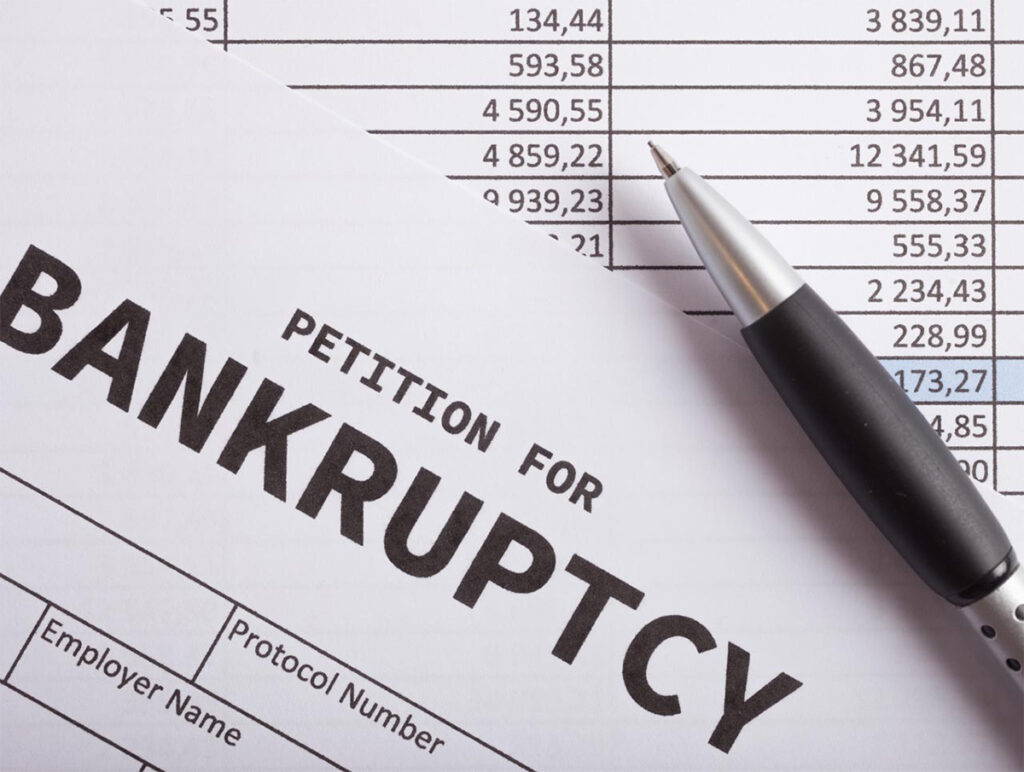If you are considering filing for bankruptcy and have done so in the past, you may be wondering about your eligibility to file again. We will explore this option and the concerns that may arise.
Can I File for Bankruptcy Under the Same Chapter Again?
When a person files bankruptcy under Chapter 7, Ohio allows them to liquidate their assets to repay their debts. This process typically grants a complete discharge of eligible debts, giving the person a clean slate. If you’ve previously filed for Chapter 7 and received a discharge, you must wait at least eight years before you can file and be eligible for another discharge under the same chapter. [1]
If you filed for Chapter 13 bankruptcy, which involves creating a repayment plan to pay off your debts, the waiting time to file for bankruptcy under the same chapter again is shorter. If you previously received a discharge under Chapter 13, you must wait at least two years before filing for bankruptcy and obtaining another discharge under Chapter 13.
Filing for Bankruptcy Under a Different Chapter
If you previously filed for Chapter 13 bankruptcy and received a discharge, you can file for bankruptcy under Chapter 7 after six years from the date of the Chapter 13 discharge. This shorter waiting period recognizes the efforts made by individuals who completed their Chapter 13 repayment plan successfully. [1]
If you had filed for a Chapter 7 bankruptcy and now want to file for bankruptcy under Chapter 13, the waiting period is more lenient. You must wait four years from the date of your previous Chapter 7 discharge to file for bankruptcy under Chapter 13 in Ohio. This flexibility allows individuals to explore different bankruptcy options and adjust their approach based on their changing financial circumstances. [2]

When Are Multiple Bankruptcy Filings Considered Abusive?
While there is no specific limit on the number of bankruptcy filings allowed, multiple filings can raise concerns about potential abuse of the system.
Bankruptcy laws are designed to provide relief for honest debtors who genuinely need a second chance. There are cases where individuals may take advantage of the system by repeatedly filing for bankruptcy to avoid their financial responsibilities.
To determine whether multiple bankruptcy filings are considered abusive, courts look for certain patterns and circumstances.
These circumstances include:
- Timing:
If an individual files for bankruptcy shortly after receiving a discharge in a previous case, it may raise suspicions of abuse. Bankruptcy laws establish waiting periods between filings to prevent abuse of the system and ensure debtors make a good faith effort to repay their debts.
- Financial Mismanagement:
If an individual repeatedly incurs new debts shortly before filing for bankruptcy or demonstrates a pattern of reckless spending, it may raise concerns about abusive behavior. Courts may question whether the debtor is genuinely seeking relief or merely trying to discharge their debts without taking responsibility for their financial actions.
- Consultation With an Attorney:
The involvement of a knowledgeable bankruptcy attorney can greatly impact the perception of multiple filings. If an individual has sought professional advice before each filing, it may indicate a genuine attempt to resolve their financial difficulties. Repeatedly filing without proper legal counsel can be seen as a sign of abuse.
- Number of Discharges Sought:
If an individual consistently files for bankruptcy with the sole intention of getting a discharge and not making any effort to repay their debts, it may be deemed as abusive. Bankruptcy should be seen as a last resort, and debtors are encouraged to explore alternative options, such as debt consolidation or debt management plans.

What if My Bankruptcy Was Dismissed?
If your bankruptcy case was dismissed without prejudice, it means that the dismissal was not final and you have the opportunity to refile your case. In this situation, you can correct the issues that led to the dismissal, such as providing missing documentation or complying with court orders. Address the concerns raised by the court to increase your chances of a successful bankruptcy filing.
Alternatively, if your case was dismissed with prejudice, it means that the dismissal is final and prohibits you from refiling for bankruptcy. This type of dismissal is usually issued when the court believes that you have abused the bankruptcy process or have deliberately disregarded court rules. A dismissal with prejudice can severely limit your options for seeking bankruptcy relief in the future.
How Often Can You File Bankruptcy and Get a Discharge?
The specific rules regarding bankruptcy and the discharge of debts are established under federal law, specifically the United States Bankruptcy Code. These rules apply to all states, including Ohio. While there is no specific limit on the number of times an individual can file for bankruptcy, there are timeframes that must pass between filings in order to receive a discharge.
These timeframes apply specifically to obtaining a debt discharge in bankruptcy. This means that if an individual files for bankruptcy but does not receive a discharge, such as in cases where the bankruptcy case is dismissed, they may be able to file for bankruptcy again without any waiting period.

Contact Richard West Law today to discuss your situation and get the help you need with filing for bankruptcy in Ohio.
FAQs
Debtors have the right to voluntarily dismiss their bankruptcy case if they choose to do so. This can be done if they no longer wish to proceed with the proceedings or have found alternative solutions to their financial issues. However, there may be implications such as limitations on refiling or loss of protections provided by the automatic stay, so it is recommended to consult with a bankruptcy attorney before making a decision.
Determining whether filing for bankruptcy is the right option for you requires careful evaluation of your financial situation. Seek guidance from a qualified bankruptcy attorney who can assess your debts, assets, income, and expenses. They will review your circumstances, such as the amount of debt you have, your ability to repay, and the impact bankruptcy will have on your future financial goals.
Multiple bankruptcy filings can impact the outcome of subsequent cases, as courts may scrutinize them more closely. The court may view multiple filings as a potential pattern of abuse or fraudulent behavior, which could affect the success of your case. If you have received a discharge in a previous bankruptcy case, you may be subject to longer waiting periods before receiving another discharge.
Sources:
[1] Law Facts: Bankruptcy | Ohio State Bar Association. (n.d.). https://www.ohiobar.org/public-resources/commonly-asked-law-questions-results/law-facts/law-facts-bankruptcy/
[2] Egan, J. (2022, April 7). How Often Can You File For Bankruptcy? Forbes Advisor. https://www.forbes.com/advisor/debt-relief/how-often-can-you-file-for-bankruptcy/




